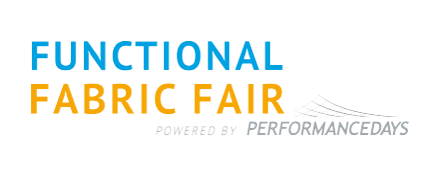Post-Weaving / Knitting: Piece-Dyed
In the conventional process, the yarn or fabric is first produced and then dyed. For a fabric with a uniform color, piece dyed tends to be the preferred method because it is easier to achieve a uniform color. The entire surface of the fabric is exposed to the dye bath in the same way. With a decent dyeing process and yarns with a uniform affinity for the dye, a very uniform color is relatively easy to achieve. Also, typical piece dyeing equipment can dye a larger batch at the same time, and they are less complex than yarn dyeing equipment (i.e. cheaper).
Pre-Weaving / Knitting: Yarn-dyed
Yarns that are dyed into specific colors before being woven into a design. The design becomes part of the fabric, taking additional time, planning, and engineering to achieve a particular design. See Giant Textile Enterprise Co. Ltd (Booth #224)
Pre-weaving/knitting: Spin-dyed
Color can already be melted into man-made polymer fibers during the yarn production long before they are woven or knitted. While man-made fiber yarns like polyester, polyamide, polypropylene or viscose/rayon are still in liquid form, the dyes (and/or pigment) is added before pressing through an extruder/spinnerets that determines the cross-section. The method is not applicable for natural fibres, as they are already harvested as solids from their source. They remain to be colored differently (piece-dyeing or printed). See e.dye (booth 201)
Pre-Weaving / Knitting: Solution-, Dope & Spun-dyed
During dyeing methods as spin-dyeing, it might be necessary to work with solution or dope. As the names imply, a solution or dope is required in the dying process. Both result in fibers that are fully saturated in a one-step process. The solution or dope activates the color to connect with the fiber. Spun-dye refers to natural colors and dyestuff being implemented by an ultrasonic process before the yarn is spun. It is mostly used for natural fibers like cotton, tencel etc.
Pre-Weaving / Knitting: Solution-Dyed Chromuch
The producer determines whether pigment, solvent dyes/liquid colorant/dyestuff or some combination is used. Pigments do offer excellent color fastness results above grade 4, under temperatures of 190°C, but the colors might often be dull and the range of pigments is limited. Other types of dyestuff often experience color migration problems, especially under heat although the color palette is wide and the colors are brilliant.
Nan Ya Plastic (Booth #134) uses solution-dyeing with both pigments and dyestuffs in their product called Chromuch. The migration problem is solved and most of the neon (brilliant and deep) colors can be achieved with excellent color fastness according to Nan Ya Plastic.
PRE- & POST-WEAVING/KNITTING: DYECOO
Dyecoo has developed a process that uses hypercritical (or supercritical) CO2 instead of liquid water as in the conventional process. The technology is restricted to polyester and disperse dyes as well as works on the basis of pigments and can be applied to the yarn (pre-weaving/knitting) or to the fabric (post-weaving/knitting)
Digital Printing
Color is applied directly with water or steam (so even less water) depending on the printing machine and selected dyestuff. Normally the ink is liquid, but there are also technologies using ink powder (InkPresso) that is liquefied by the print machine during production. The huge advantage of digital printing in general: It does not need any minimum quantities – exactly the required quantity can be produced (instead of a minimum quantity).
The technology has improved in recent years becoming less expensive and faster – printing can be a real option to consume less water, produce less waste, and reduce costs.
See: Burlington (Booth #538); Flying Tex Co., LTD (Booth #129)
Spray-Dyed
Similar to printing, the dye stuff is applied to the surface of the fabric. Spray-dyeing is not meant to produce uni-colored fabrics, but effects and colorful eyecatchers. The color is sprayed as a liquid (so with little water content) and does not require the addition of water as needed in piece-dyeing. Therefore, it can be considered as a low water consumption process.
